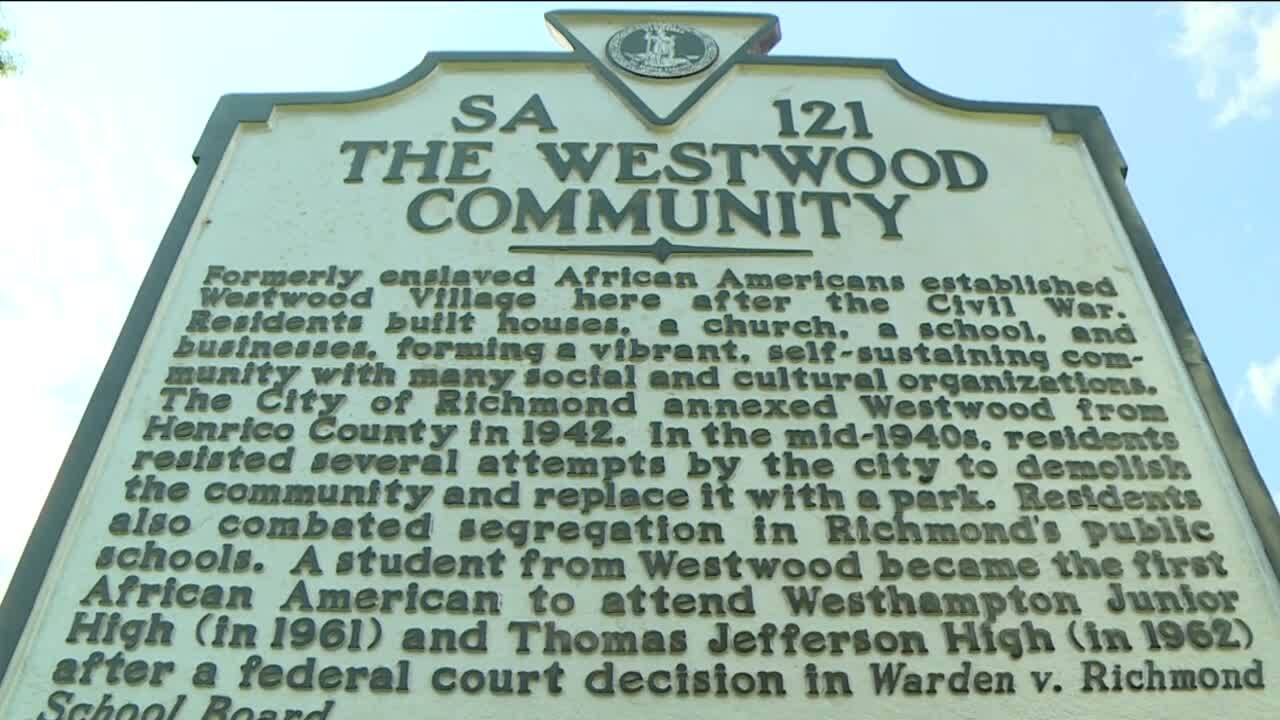RICHMOND, Va. -- The 149-year-old Westwood Community, which sits off Patterson Avenue in Richmond near Willow Lawn, was the first neighborhood established by formerly enslaved Africans after the Civil War in what was then Henrico County.
“Can you imagine, six years after the Emancipation Proclamation, Westwood then becomes a part of the African American odyssey for freedom," Dr. Colita Nichols Fairfax, the former chair of Virginia Board of Historic Resources said.
Descendants said the neighborhood's history was hidden from the public for decades. But on Sunday a new state historical marker was unveiled at the intersection of Willow Lawn Drive and Dunbar Street.
“We thank you for the work that you’ve done Lord God," former Westwood resident Clarence Finney Jr. said at the unveiling. "Bringing this community together, Lord God, and establishing the Westwood Community.”
After establishing the village, residents “built houses, a church, a school, and businesses, forming a vibrant, self-sustaining community with many social and cultural organizations,” the marker reads.
Fairfax said the neighborhood thrived and became a "self-sustaining, sophisticated, economic, political, educational, and religious enclave."

“Now, it wasn’t always peas and carrots in Westwood," former Westwood resident Warrick Taylor explained. "We did have external threats: political and physical."
In fact, Westwood was annexed by Richmond in 1942 and the city later wanted to demolish the neighborhood to create a park. But the community successfully resisted.
“In the mid-1940s, residents resisted several attempts by the city to demolish the community and replace it with a park," Rev. Dr. Jeanette Brown with Friends of Westwood Playground said.
Neighbors also fought segregation in Richmond’s public schools when a Westwood student became the first Black to attend Westhampton Junior High in 1961 and then Thomas Jefferson High in 1962.
“We are indeed thankful to God for all of those who persisted, who would not give up,” Brown said.
Fairfax said the community was often ignored and isolated in Henrico and residents even had to fight for sewer lines.
“This marker educates the public that this sacred ground, consecrated by sweat, faith, hard work, blood, family, vision and drive," Fairfax said. “Remembering is cleansing; it’s healing; it keeps you human; it keeps you connected to the divine.”
Nearly a century and a half later, some of the neighborhood's stories of resilience, persistence and ingenuity are finally being told.
“And still, a community continues to progress and grow and succeed and nurture and move into the future, as they have preserved in the past," Dabney Nichols said.

The historical marker reads:
Formerly enslaved African Americans established Westwood Village here after the Civil War. Residents built houses, a church, a school, and businesses, forming a vibrant, self-sustaining community with many social and cultural organizations. The City of Richmond annexed Westwood from Henrico County in 1942. In the mid-1940s, residents resisted several attempts by the city to demolish the community and replace it with a park. Residents also combated segregation in Richmond’s public schools. A student from Westwood became the first African American to attend Westhampton Junior High (in 1961) and Thomas Jefferson High (in 1962) after a federal court decision in Warden v. Richmond School Board.





